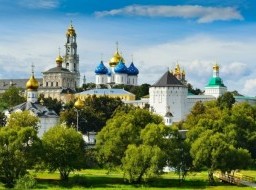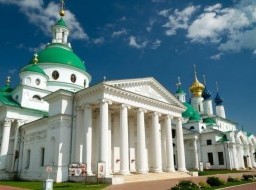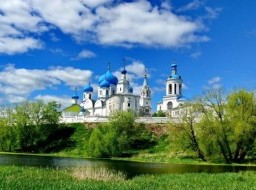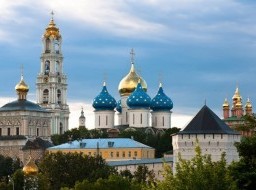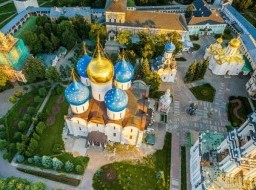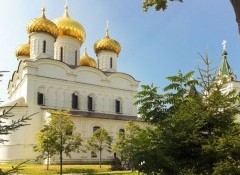Holy Dormition Pskovo-Pechersky Monastery
The Holy Dormition Pskovo-Pechersky Monastery features 10 colorful churches, a stone belfry, and restored stone fortification walls with bastions. The monastery has never been closed, not even under the Soviet regime, and today you can see the monks working in the fields and stables. The 15th-century church built into the hillside houses the icon of the Dormition of the Purest Mother of God. The monastery is also famous for its children's choir. The Holy Dormition Pskovo-Pechersky (Pskov-Caves) monastery is located on the historically Russian land, 50 kilometers to the west of the city of Pskov, near the very border of Estonia and 340 kilometers from St. Petersburg. The date of the monastery's foundation is considered to be August, 15/28,1473. It was on that day that the monastery's founder, St. Jonah (Shesnik) consecrated the church of the Dormition of the Most Holy Mother of God — a church which was built into the hillside. But the monastic life had actually begun there much earlier, when a few hermits, seeking solitude, came to live in the caves. The holy relics of one of them, St. Mark the desert-dweller, still rest in the caves and many people come to venerate them. The monastery's chronicle relates that "the Most Pure Virgin herself chose this site in the valley of the Kamenets spring, blessed it, exalted it through her chosen people and has been protecting it ever since. Five centuries have passed, and the monastery has seen both glory and tragedy, but never have the holy lampadas gone out, nor prayer ceased in this blessed place. The monastery gradually grew in size and reputation. The 16th century was the time of its flourishing, when under Abbot Cornelius the Annunciation and St. Nicholas Churches were erected as well as the stone belfry and the monastery was fortified around by a stone wall with bastions, and the brethren numbered up to 200. Abbot Cornelius collected a rich library, established chronicling and founded an icon-painting workshop. The monastery became an important missionary center and stronghold of Orthodoxy on the western border of Russia. Tradition has it that, slandered by envious people, Abbot Cornelius was beheaded by Tsar Ivan the Terrible on the 20th of February, 1570 and now numbers among the hosts of holy martyrs. In the 16th and 17th centuries the monastery suffered from numerous attacks by the "Latins" — Polish and Lithuanian troops, as well as by the Swedish and German soldiers. The most serious attack was lead by the Polish King Stephan Batory in the autumn of 1581. In 1920 the town of Pechory, in accordance with the Tartu Agreement, was given to Estonia, and the monastery found itself outside Russia. This new situation did not affect the church services in the monastery — they never ceased; however, the new authorities caused a lot of problems and distress to the brethren. After the Second World War, in the 50s, the revitalization of the monastery began, and Archimandrite Alipi (Voronov, +1975) contributed much to it. It was under his abbacy that all the churches were repaired and the stone wall and bastions were restored to their original appearance. During those years the spiritual life of the monastery also flourished. Under the Holy Protection of the Most Pure Mother of God were gathered many ascetics and elders. Through their prayerful pastoral labours lived the great tradition of Orthodox asceticism and eldership. This tradition is still carried on in the monastery by Archimandrite Adrian (Kirsanov). Now there are ten churches in the monastery. It is in the oldest gold-domed Dormition church that one can see and venerate the miracle-working icon of the Dormition of the Most Pure Mother of God and the relics of the Holy Martyr Cornelius. Currently the monastic community numbers over 90. The brethren celebrate daily morning and evening services, perform perpetual psalter reading and spiritually guide a large number of people seeking their wise spiritual counsel. The monks also labour in the monastery fields and stable. There are an icon-painting and an icon-restoration workshops and a Sunday school. The monks run a House of Mercy which comprises a Pilgrim's house and a hospice for aged monastery workers. The monastery is also renowned for its children's choir. In 2013 the monastery marked the 540th anniversary of its existence and salvific work in the Orthodox Church. The years pass, governments and empires rise and fall, but the monastery ever remains a firm stronghold of Orthodoxy in a restless world. |

